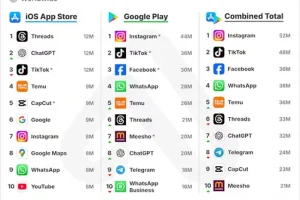Photo credit: Unsplash
In today’s competitive online marketplace, e-commerce businesses must adapt rapidly to keep up with changing search engine algorithms and evolving consumer behavior. Recognizing this need, Backspace Marketing, a leading digital strategy agency, has rolled out an enhanced suite of SEO strategies designed specifically for e-commerce in 2024. These strategies focus on improving site visibility, driving high-quality traffic, and optimizing user experiences to turn clicks into loyal customers.
Enhancing E-commerce Visibility Through Targeted Keywords
In the e-commerce sector, visibility is essential. Backspace Marketing’s approach to e-commerce SEO emphasizes using highly relevant, product-specific keywords that align closely with user search intent. By conducting in-depth keyword research, the team identifies terms that not only draw in traffic but also attract users with high purchase intent.
High-impact keywords such as “buy [product name] online” or “[product category] deals” can help e-commerce businesses capture the attention of users actively seeking specific products, increasing the likelihood of conversions. When combined with well-optimized product descriptions and category pages, these targeted keywords help e-commerce sites reach the right customers at the right time.
Tips for Optimizing Keywords in E-commerce:
- Long-Tail Keywords: Focus on keywords with three or more words that indicate specific intent, like “affordable sustainable clothing.”
- Seasonal Trends: Adjust keywords seasonally to match buying trends, such as “holiday gift ideas” in winter.
- User-Centric Descriptions: Create product descriptions that naturally incorporate keywords while focusing on product benefits and uses.
Structuring E-commerce Sites for SEO and Improved User Experience
An organized, intuitive site structure is vital for both search engine rankings and user satisfaction. Backspace Marketing prioritizes a seamless navigation experience by arranging products into clear, easily accessible categories. This streamlined approach makes it easy for customers to browse, reducing bounce rates and increasing the time spent on-site.
Additional efforts, such as optimizing load times and ensuring mobile responsiveness, further contribute to both user engagement and SEO performance. As mobile commerce continues to grow, ensuring that e-commerce sites function smoothly on smartphones is crucial for capturing a broad audience.
Key Elements of an Optimized E-commerce Site:
- Clear Navigation: Use a logical hierarchy with main categories, subcategories, and product pages.
- Fast Load Times: Compress images and leverage caching for quicker page loading.
- Mobile Optimization: Design a responsive layout that provides a smooth shopping experience on all devices.
The Power of Quality Link Building in E-commerce SEO
Link building remains a core component of effective SEO, and it’s especially valuable in e-commerce. By securing backlinks from reputable sources, e-commerce businesses can establish trust and enhance their domain authority. Quality links act as endorsements, indicating to search engines that the site is credible and valuable to users.
Backspace Marketing emphasizes obtaining links from industry-relevant websites, such as authoritative blogs, news outlets, and product review sites. These backlinks can significantly improve search rankings while helping e-commerce brands build trust with potential customers.
Strategies for Building High-Quality Links:
- Content Partnerships: Collaborate with influencers or bloggers for product reviews that include backlinks.
- Guest Posting: Publish articles on industry-related websites, linking back to relevant e-commerce pages.
- Educational Content: Create informative resources, like buying guides or industry reports, that are naturally shareable and attract links.
Leveraging Social Media for SEO-Driven Traffic
Social media platforms are invaluable for expanding reach, and Backspace Marketing integrates social media into its e-commerce SEO strategies to enhance visibility. Platforms like Instagram, Pinterest, and Facebook allow brands to target niche audiences, drive traffic, and increase engagement. By promoting products through both organic posts and targeted ads, e-commerce businesses can attract qualified traffic that is more likely to convert.
This combined SEO and social media approach also reinforces brand identity, allowing e-commerce brands to engage potential customers across multiple touchpoints. Paid promotions, influencer collaborations, and engaging visual content all help bridge the gap between social interactions and on-site purchases.
Social Media SEO Tips for E-commerce:
- Influencer Partnerships: Collaborate with influencers whose audiences align with your target demographics.
- Engaging Visuals: Use high-quality images and videos that showcase products and drive engagement.
- Call-to-Action Links: Include direct links to product pages in social media posts to convert social engagement into traffic and sales.
Aligning Content with User Intent to Drive Conversions
Content optimized for user intent is a cornerstone of Backspace Marketing’s 2024 SEO approach. By analyzing common search queries and frequently asked questions, the team tailors content that directly addresses customer needs and interests. This user-centric content approach boosts SEO rankings and enhances the shopping experience, as customers are met with information that feels tailored to their search intent.
For instance, a shopper searching for “how to style [product]” can benefit from a blog post offering styling tips, product recommendations, or related content. By delivering relevant content, e-commerce brands can better engage users and increase conversion rates.
Steps to Create Intent-Driven Content:
- FAQs on Product Pages: Add frequently asked questions that address common concerns or interests.
- Blog Content: Publish articles that answer questions and provide value to potential customers.
- Product Use Cases: Write content that showcases how the product can solve a problem or meet a specific need.
Achieving Sustainable Sales Growth with Targeted SEO Strategies
Backspace Marketing’s SEO strategies offer a comprehensive framework for sustainable growth. By targeting high-intent keywords, optimizing site structure, and leveraging content that resonates with users, e-commerce businesses can expect increased visibility, better-quality traffic, and improved conversion rates. For those looking to maintain a competitive edge, these data-driven strategies provide a pathway to capturing new audiences and achieving long-term success.
With a focus on evolving trends and a commitment to user intent, Backspace Marketing helps e-commerce businesses navigate the complexities of SEO in an ever-changing digital landscape. In 2024, these tailored strategies are designed not only to boost search rankings but also to foster meaningful, lasting connections with customers.










